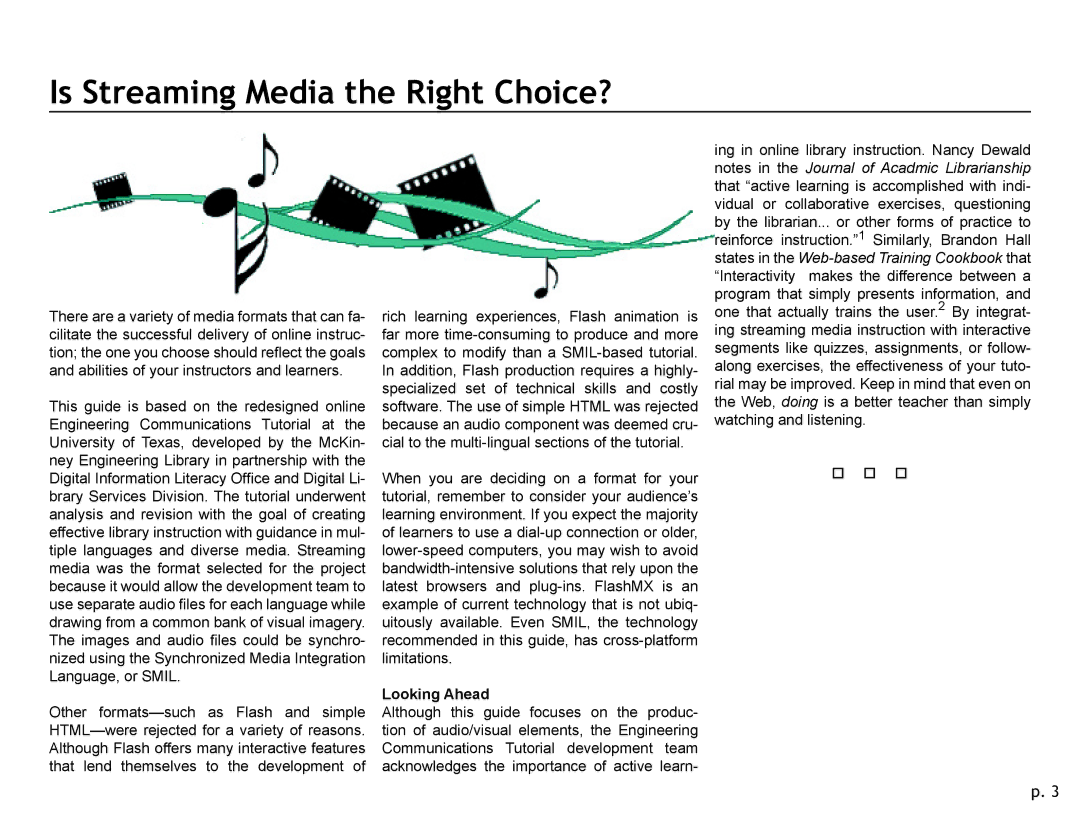
Is Streaming Media the Right Choice?
There are a variety of media formats that can fa- cilitate the successful delivery of online instruc- tion; the one you choose should reflect the goals and abilities of your instructors and learners.
This guide is based on the redesigned online Engineering Communications Tutorial at the University of Texas, developed by the McKin- ney Engineering Library in partnership with the Digital Information Literacy Office and Digital Li- brary Services Division. The tutorial underwent analysis and revision with the goal of creating effective library instruction with guidance in mul- tiple languages and diverse media. Streaming media was the format selected for the project because it would allow the development team to use separate audio files for each language while drawing from a common bank of visual imagery. The images and audio files could be synchro- nized using the Synchronized Media Integration Language, or SMIL.
Other
rich learning experiences, Flash animation is far more
When you are deciding on a format for your tutorial, remember to consider your audience’s learning environment. If you expect the majority of learners to use a
Looking Ahead
Although this guide focuses on the produc- tion of audio/visual elements, the Engineering Communications Tutorial development team acknowledges the importance of active learn-
ing in online library instruction. Nancy Dewald notes in the Journal of Acadmic Librarianship that “active learning is accomplished with indi- vidual or collaborative exercises, questioning by the librarian... or other forms of practice to reinforce instruction.”1 Similarly, Brandon Hall states in the
p. 3
